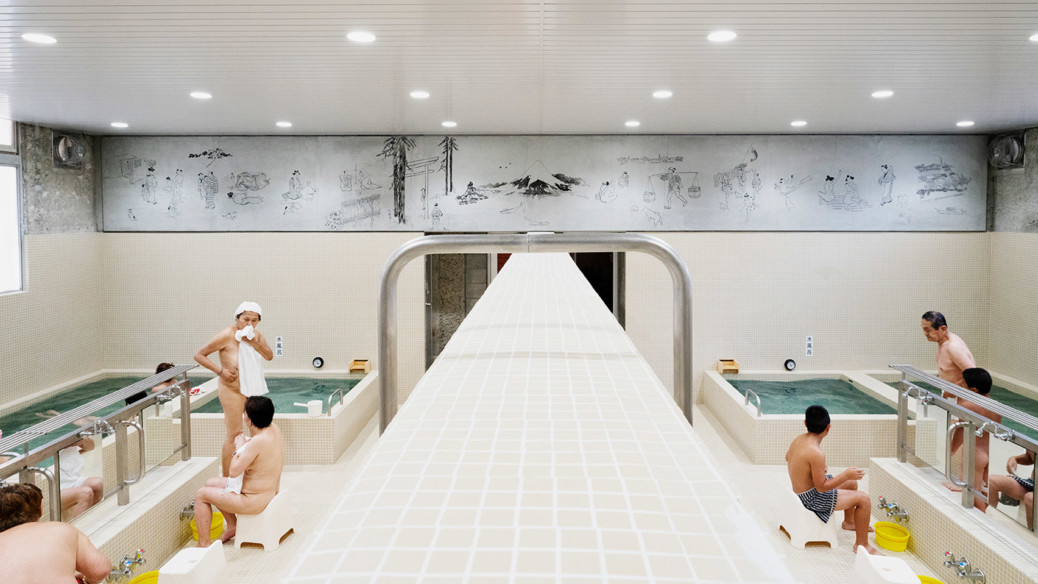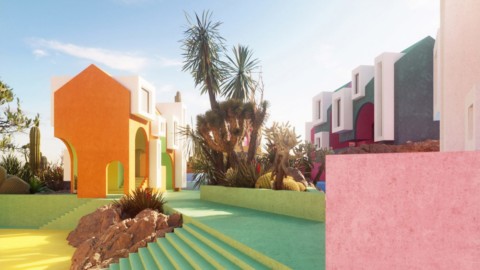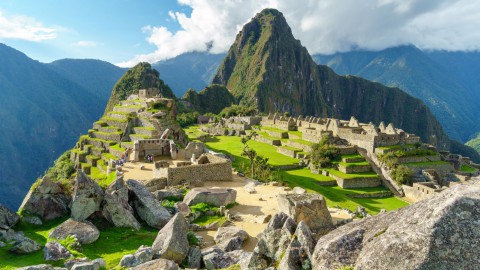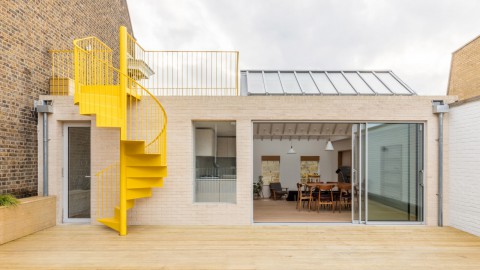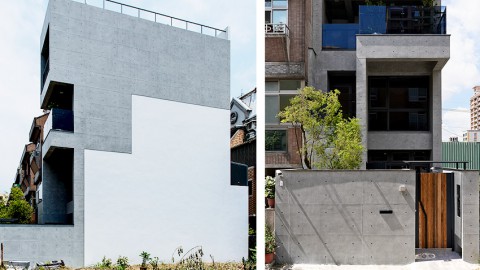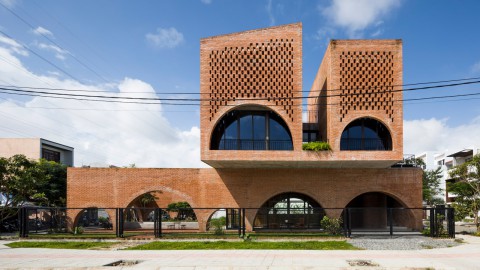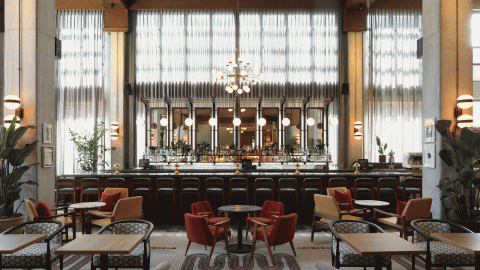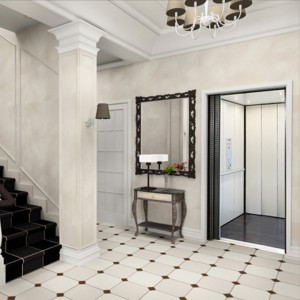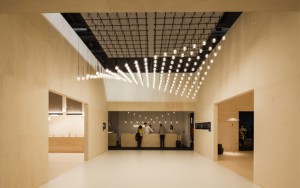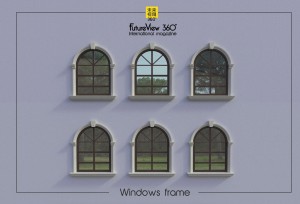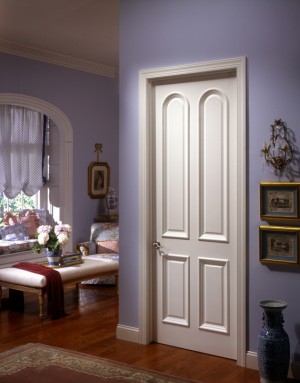Schemata Architects has renovated a traditional sento, or public bathhouse, in Tokyo adding modern touches including a bar serving beer.
Named Koganeyu after the after the famous Koganeyu Onsen baths in Sapporo, the project involved refurbishing a public bathhouse that was originally built in 1985.
Schemata Architects在東京翻新了傳統的哨所或公共浴室,增添了現代氣息,包括供應啤酒的酒吧。
該項目以札幌著名的Koganeyu溫泉浴場命名,名為Koganeyu,該項目涉及翻新最初建於1985年的公共澡堂。
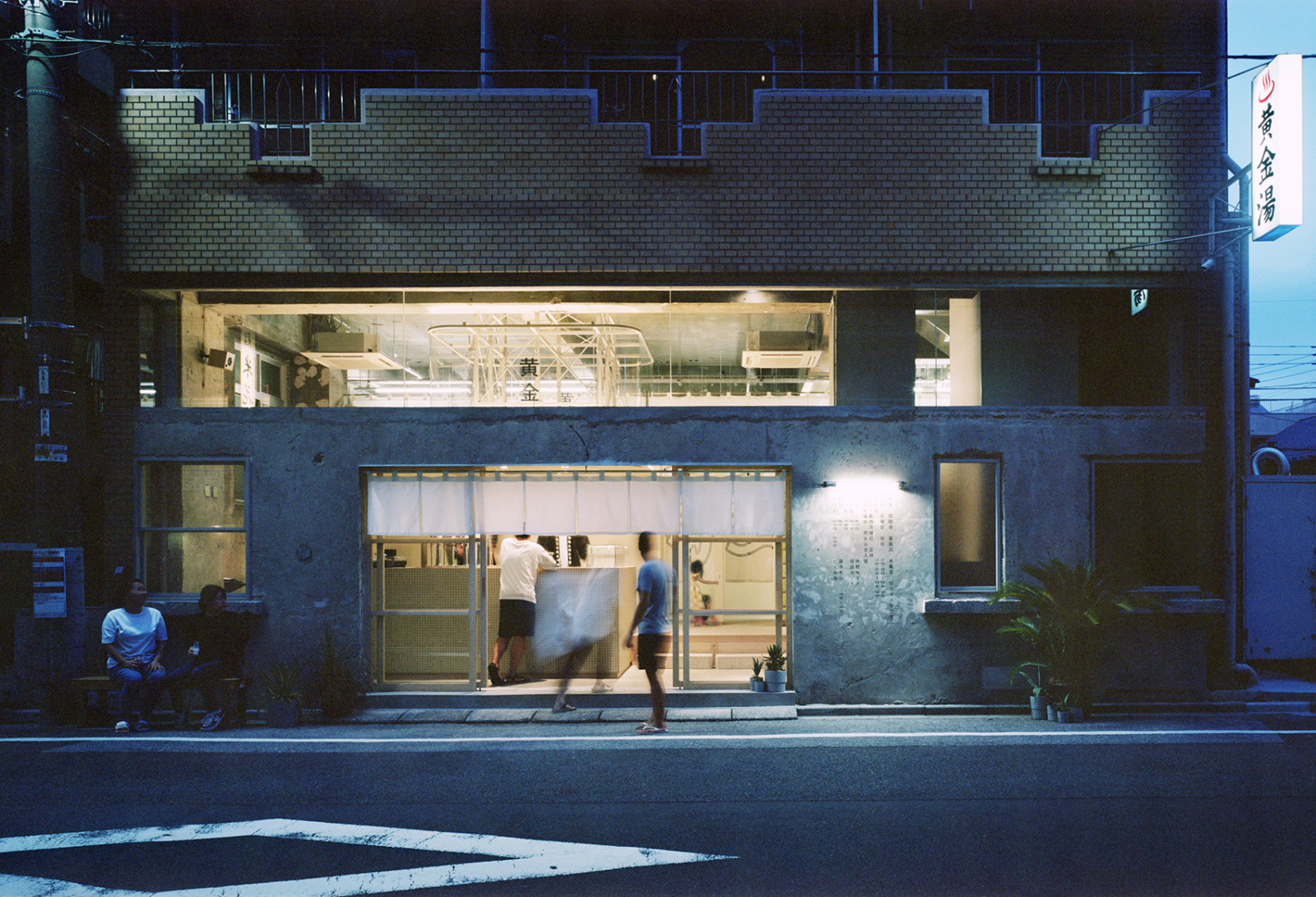
Tokyo based Schemata Architects kept traditional elements, such as the half wall separating the men and women’s bathing areas, but introduced contemporary colour schemes and attractions for younger bathers.
“Traditionally, sento was a necessary public function for an area because people didn’t have bathrooms in their houses,” project architect Kotaro Shimada told Dezeen.
“However today 95 per cent of them have it, so gradually sento has been disappearing from the city,” Shimada added.
“We think this culture is really important and want to keep also for the next generation, so we thought that a new sento has to have other functions that make people today want to go often.”
總部位於東京的Schemata Architects保留了傳統元素,例如分隔男女沐浴區的半牆,但為年輕的沐浴者介紹了現代配色方案和吸引力。
“傳統上,哨兵是該地區必不可少的公共活動,因為人們的房屋中沒有浴室,”項目建築師Komaro Shimada告訴Dezeen。
Shimada補充說:“然而,今天有95%的人擁有它,所以逐漸地,這座城市已經消失了。”
“我們認為這種文化確實很重要,並且希望對下一代也保持這種文化,因此我們認為新的哨兵必須具有其他功能,使當今的人們想經常去旅行。”
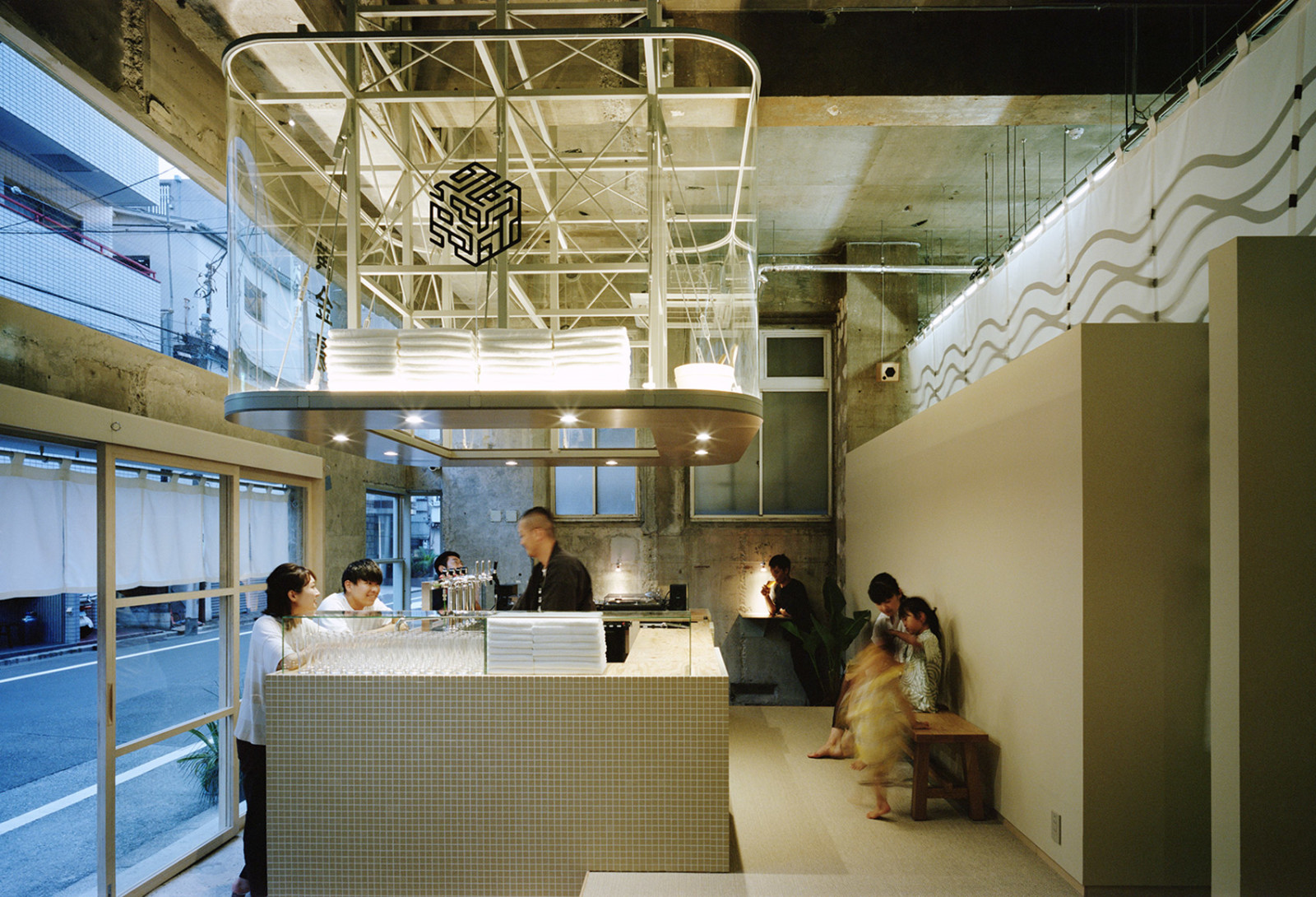
Schemata Architects designed a bar area that serves beer at the front of the sento that’s visible from the street.
The bar is an adaption of the traditional sento layout, which originally had a reception desk called a bandai facing in towards the bath for staff to keep an eye on the bathers.
Schemata Architects設計了一個酒吧區,該酒吧區可從街道上看到的哨兵前部喝啤酒。
酒吧是對傳統哨兵佈局的改編,該佈局最初有一個稱為Bandai的接待台,面朝浴缸,工作人員可隨時注意沐浴者。
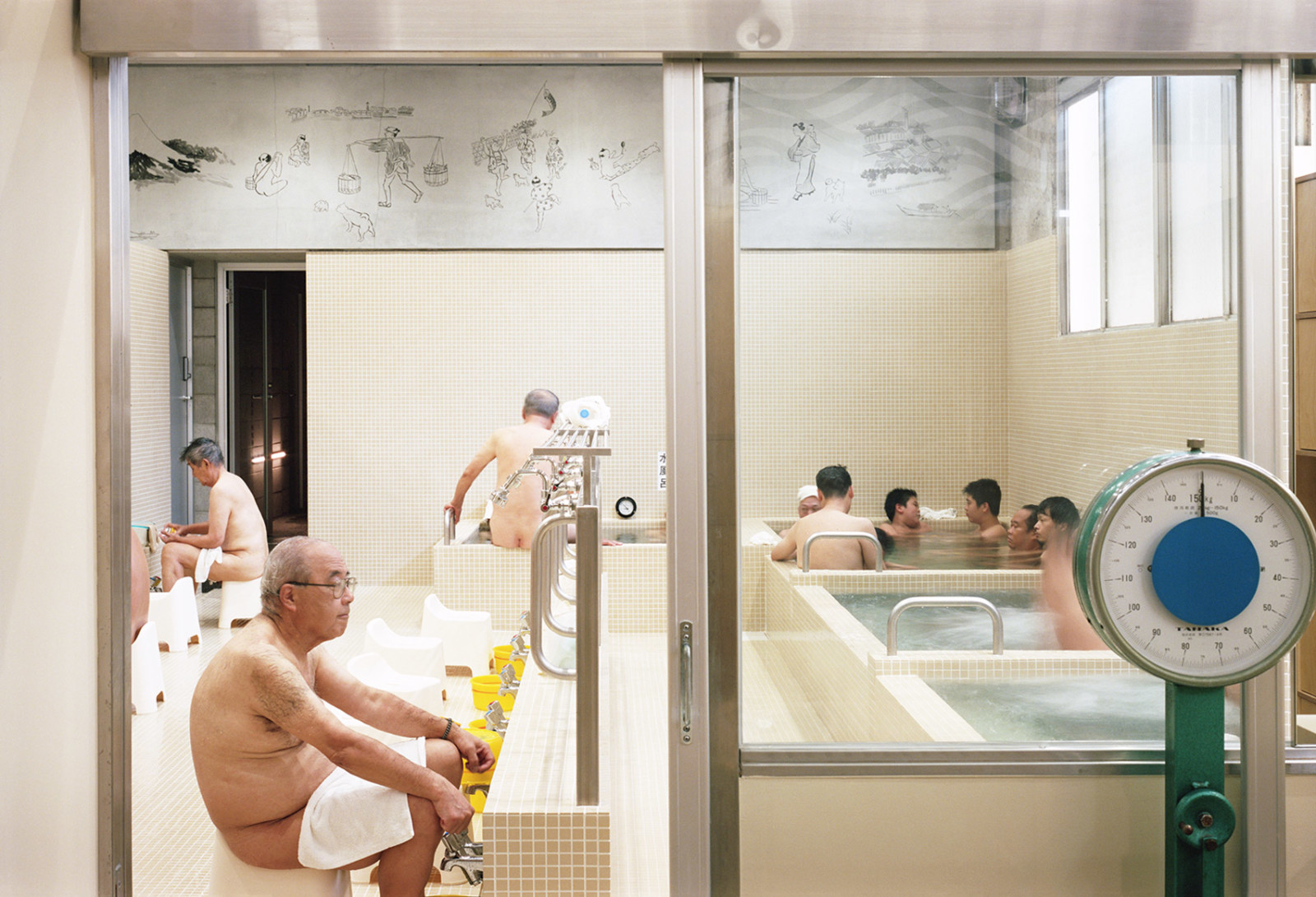
More modern bathhouses put this booth out front, but Schemata Architects decided to take it one step further and have it as an island that can double as a DJ booth for events.
Industrial-style concrete walls have been left bare to contrast with the neat square tiles in soft beige that cover the bar. Soft lighting adds to the atmosphere and clean fluffy towels are stacked above the brushed metal shelf.
越來越多的現代浴室將這個展台擺在最前面,但是Schemata Architects決定將其進一步發展,並將其作為一個島,可以作為活動的DJ展位加倍。
工業風格的混凝土牆已裸露,與覆蓋酒吧的柔和的米色方形瓷磚形成鮮明對比。 柔和的燈光營造出氛圍,乾淨的蓬鬆毛巾堆積在拉絲金屬架子上方。
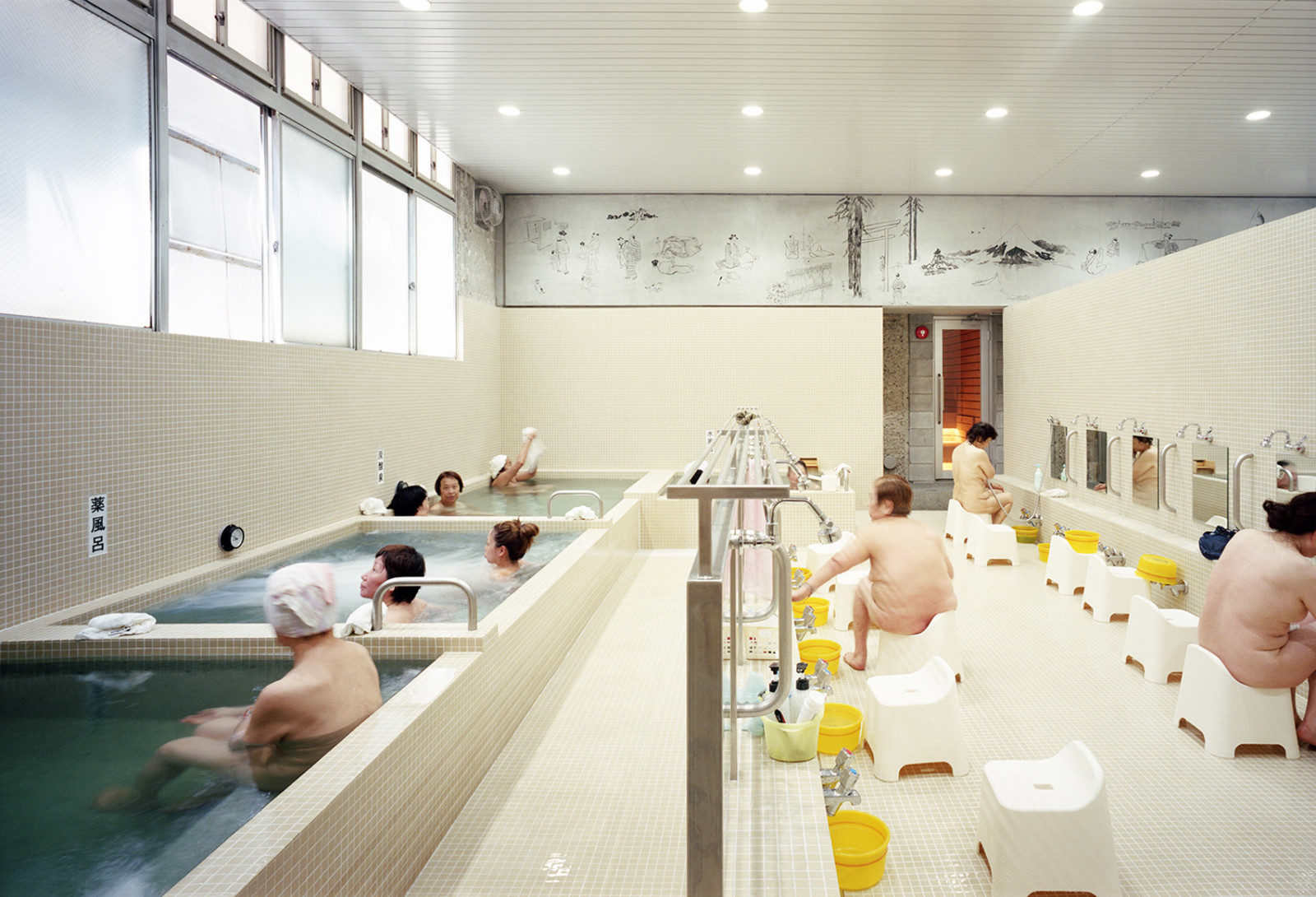
The bathing area is divided according to sex, with men on one side and women on the other. A traditional half-wall separates the two to afford privacy to the nude bathers while allowing couples or families to communicate verbally and share soap over the wall.
Schemata Architects deliberately used the same tiles as the bar area for this feature and added a metal railing that runs from one side to the other.
“During bathing time people are separated into men and women by the 2.25-metre- high boundary wall, but after they will be getting together in the end over this 1.15-metre-high counter with beer,” explained Shimada.
“We hope using same materials could help people to feel the romanticism like that.”
沐浴區按性別劃分,一側為男性,另一側為女性。 傳統的半牆將兩者分開,以為裸泳者提供私密性,同時允許夫妻或家庭進行口頭交流並在牆上共享肥皂。
Schemata Architects特意使用與酒吧區域相同的圖塊來實現此功能,並添加了從一側延伸到另一側的金屬欄杆。
島田說:“在洗澡的時候,人們被2.25米高的邊界牆分隔成男女,但最終他們將在這個1.15米高的櫃檯上聚在一起,喝啤酒。”
“我們希望使用相同的材料可以幫助人們感受到那樣的浪漫主義。”
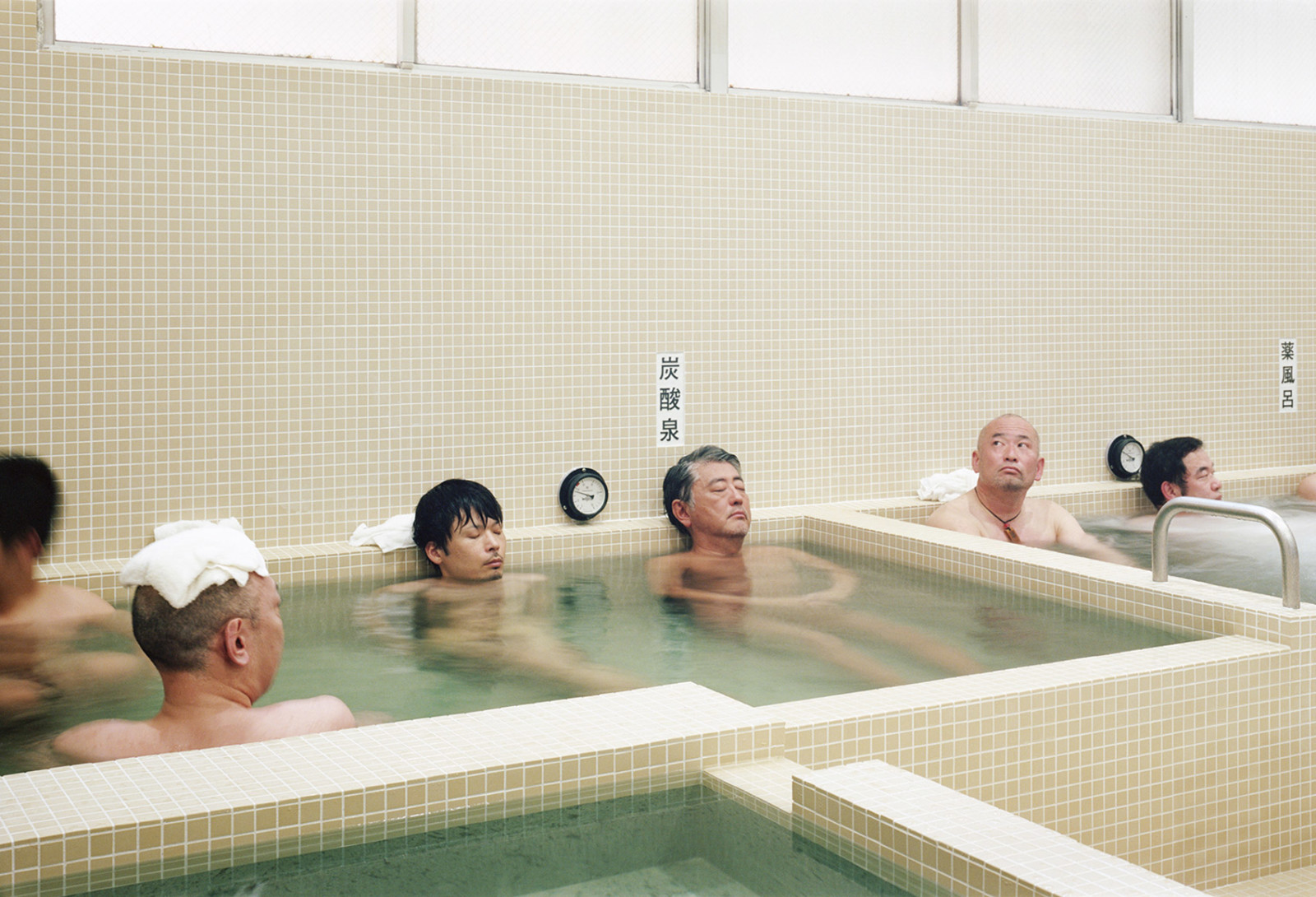
Small square porcelain tiles were selected because they’re easy to clean, and the mortar around the edges helps make them less slippy underfoot. Schemata Architects chose beige because it’s “warm, bright and universally good”.
The insides of the heated baths are made from Towada stone, which looks blue-green when it’s wet.
“It makes the water look blue and clean and its texture feels a bit luxurious,” said Shimada. “Towada stone is a popular material for onsen, but I’ve never seen it used in this kind of local bathhouse in Tokyo.”
選擇小方形瓷磚是因為它們易於清潔,並且邊緣處的砂漿有助於減少腳下的打滑。 Schemata Architects選擇米色是因為它“溫暖,明亮且普遍良好”。
加熱浴的內部由十和田石材製成,潮濕時看起來呈藍綠色。
島田說:“它使水看起來藍淨,其質地讓人感覺有些豪華。” “十和田石材是受歡迎的溫泉材料,但我從未見過在東京的這種當地澡堂中使用過它。”
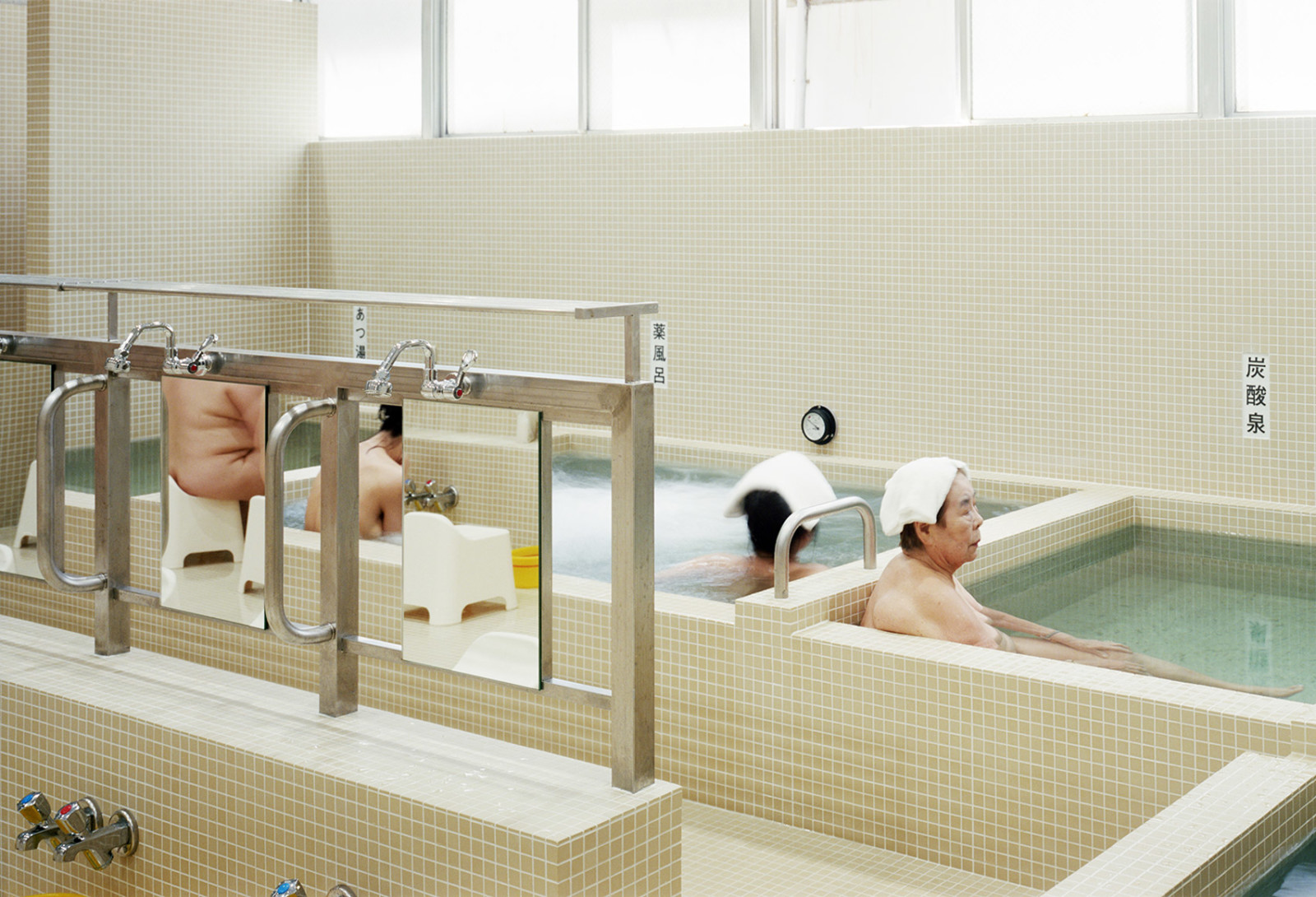
Schemata Architects used a darker palette for the sauna and cold plunge pool area. The concrete has a dark aggragate that makes it more grippy and lightly massages the foot.
An outdoor area with seating lets customers cool down between baths.
Schemata Architects在桑拿浴室和冷水游泳池區域使用了較暗的調色板。 混凝土具有深色的凝結物,使其更加抓地力並輕輕按摩腳。
帶座位的室外區域可讓客戶在洗個澡之間放鬆一下。
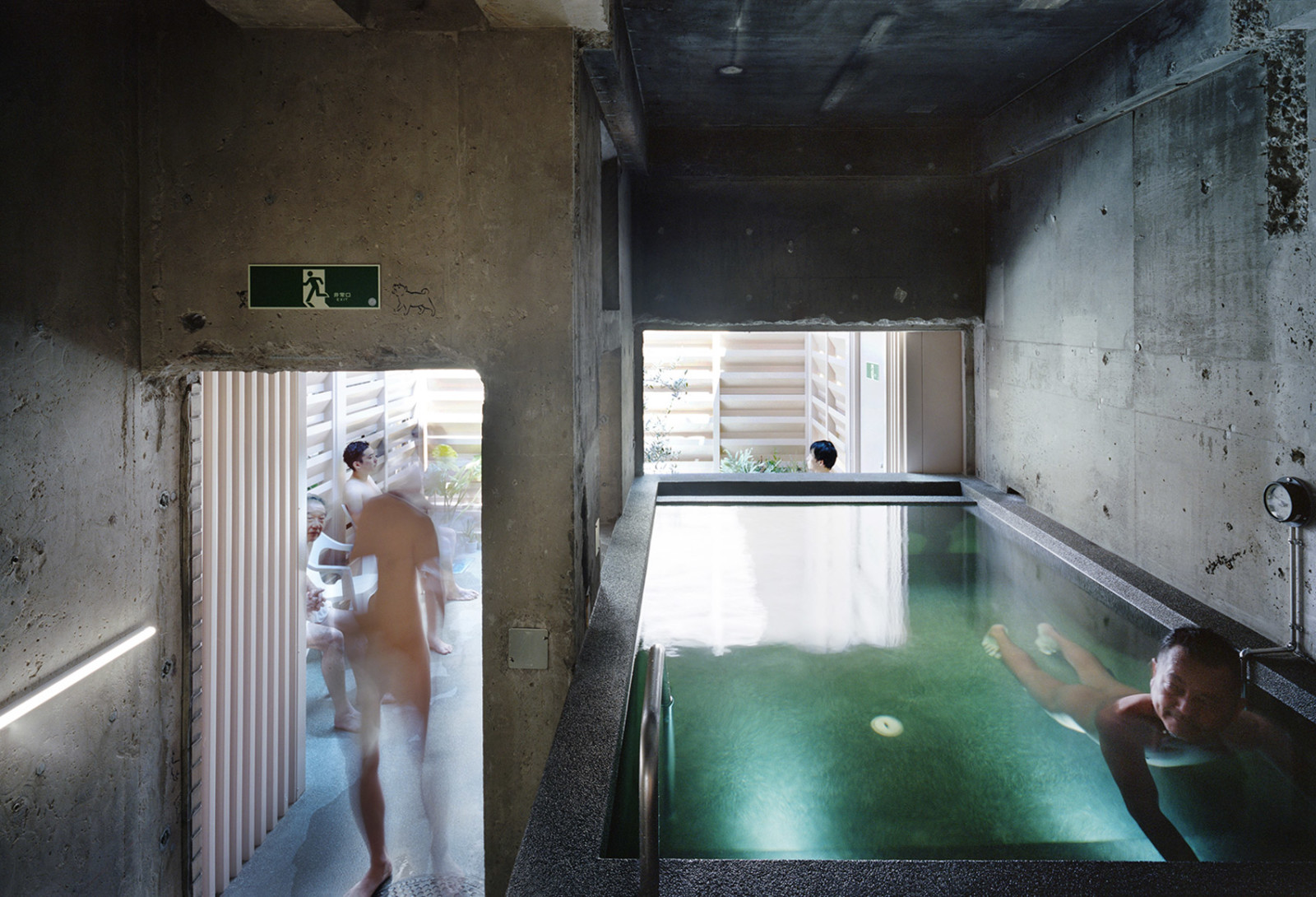
The floors of the reception bar and locker room are made of sandy-coloured woven vinyl chosen by Schemata Architects because it drys quickly and is pleasant to stand on even with wet feet.
Birch plywood was selected for the locker doors in the changing rooms because it’s resistant to moisture and complemented the pale colour scheme.
接待吧和更衣室的地板是由Schemata Architects選擇的沙色編織乙烯基製成的,因為它乾燥快,即使腳濕也可以站立。
樺木膠合板被選為更衣室的儲物櫃門,因為它具有防潮性能,並補充了淺色方案。
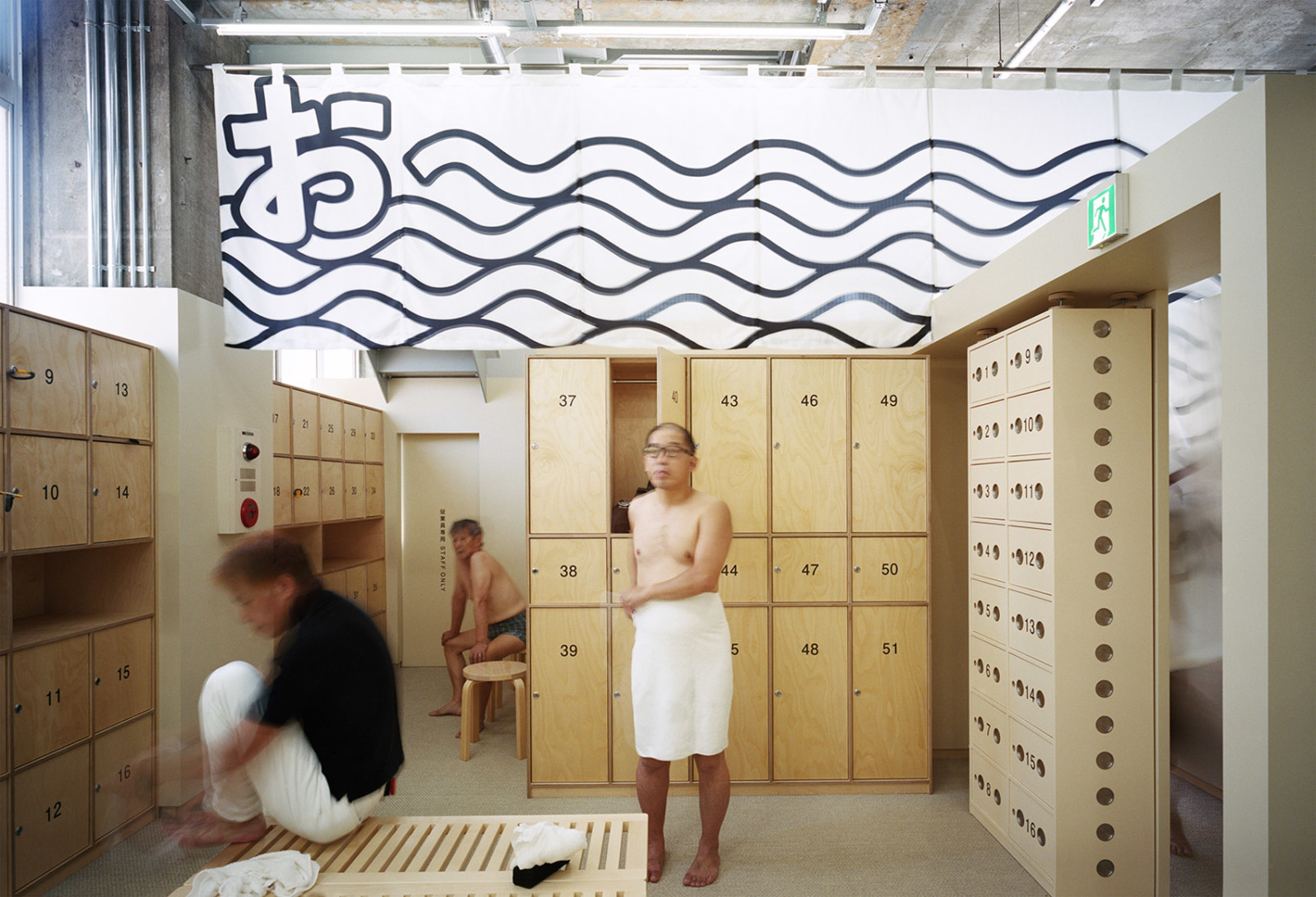
Schemata Architects commissioned artists to reinterpret a couple of traditional sento decorations. Yoriko Hoshi painted a mural of people and Mount Fuji that scrolls around the top of the bathing area.
Iichiro Tanaka designed the noren – traditional fabric split curtains – that divide the male and female changing rooms. Tanaka chose the exclamation Oi! in homage to the greetings exchanged by men and women over the wall. The branding and signage are by Takahashi Hiroko.
Schemata Architects委託藝術家重新詮釋了幾種傳統的哨兵裝飾。 星空洋子(Yoriko Hoshi)畫了一幅人與富士山的壁畫,畫在沐浴區的頂部。
田中一郎(Iichiro Tanaka)設計了noren,即傳統的織物分體式窗簾,它將男女更衣室分開。 田中選擇了驚嘆大井! 為了紀念男女在牆上交換的問候。 品牌和標牌由高橋裕子製作。
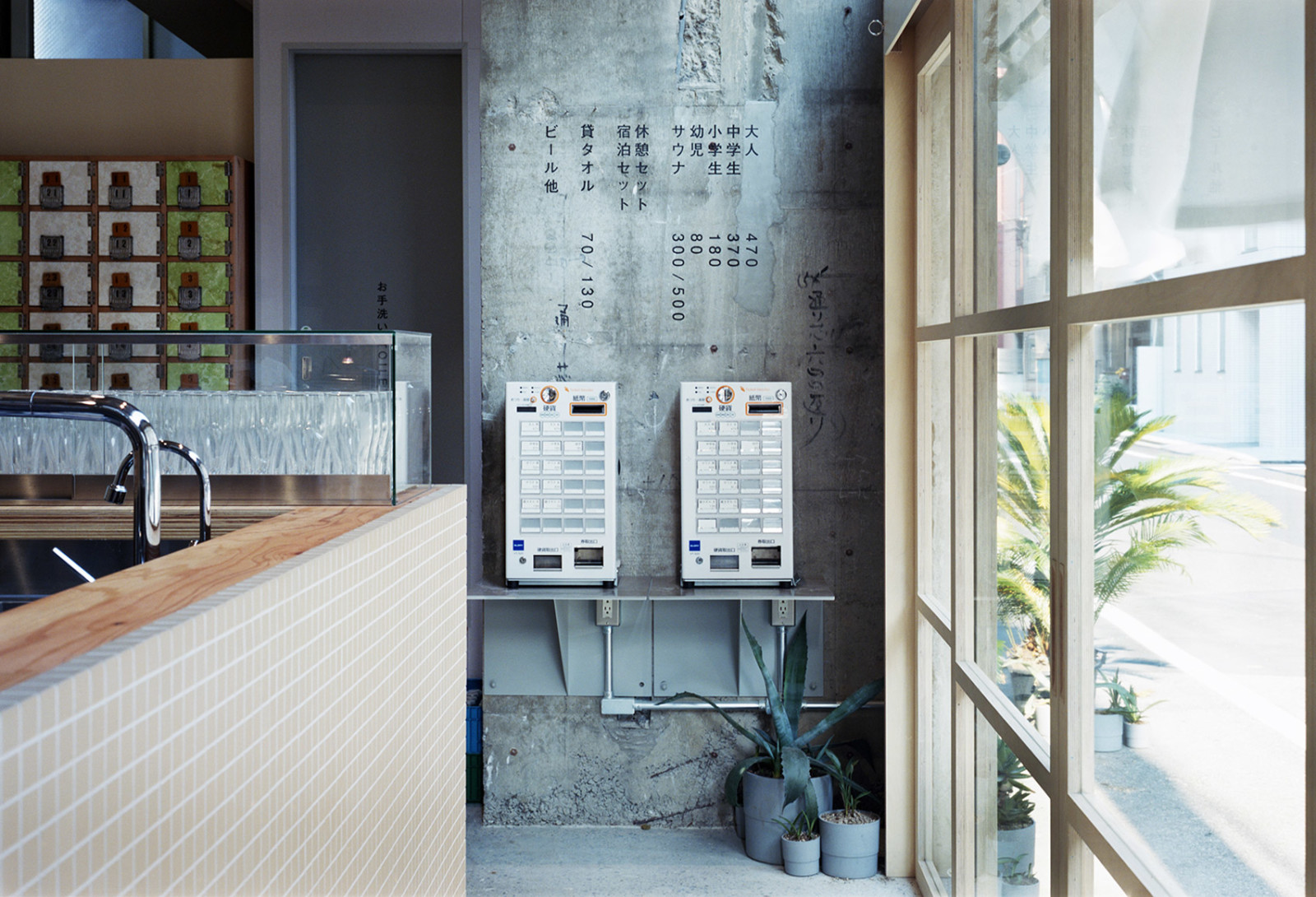
Founded in 1998 by Jo Nagasaka, previous projects by Schemata Architects include the renovation of a capsule hotel in Tokyo and a skinny red tower with a grocery shop at the base.
Photography is by Yurika Kono.
由Jo Nagasaka於1998年創立,Schemata Architects先前的項目包括對東京的一家膠囊旅館進行翻修,以及一座瘦削的紅色塔樓,其底部設有一家雜貨店。
攝影是Yurika Kono。
FROM:https://www.dezeen.com/2020/09/06/schemata-architects-sento-bathhouse-renovation-tokyo-architecture/

